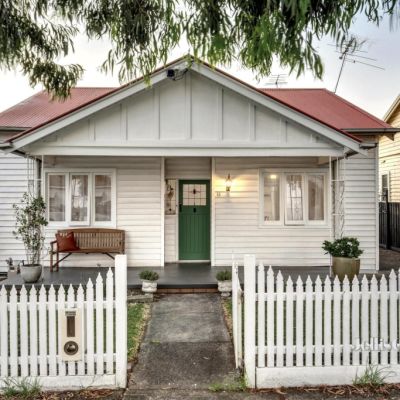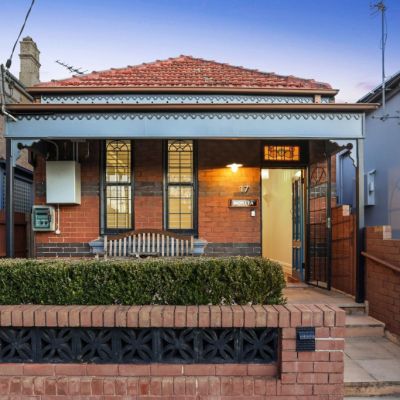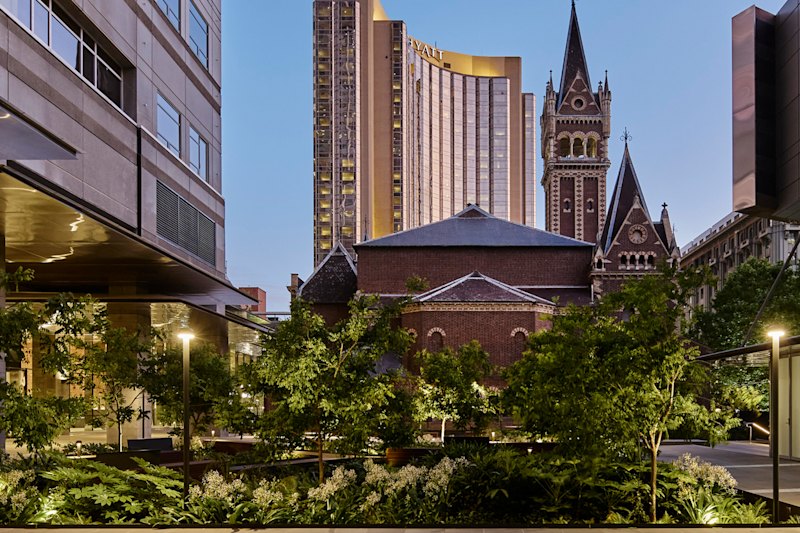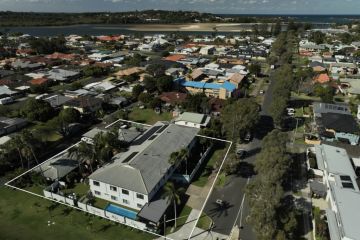RBA maintains cash rate at 4.35 per cent amid rising inflation
In what will be an enormous relief for everyone bar those living off the interest on their savings, the Reserve Bank of Australia (RBA) decided to hold the cash rate at 4.35 per cent on Tuesday.
With fears that obstinate inflation might persuade the board to lift the rate, and inflict even more hardship on already stressed mortgage-holders, the decision has been welcomed by most economists, although there’s still disagreement on when the first rate cut might come.
Many had been anticipating a rise to a 12-year high of 4.6 per cent before the Australian Bureau of Statistics announced last week that inflation had risen by just 1 per cent year-on-year to 3.8 per cent in the June quarter. The RBA had previously said it would hike the rate if inflation reached 4 per cent or over.
“But this lower-than-expected rate of inflation has given us all a bit of a reprieve,” said HSBC chief economist Paul Bloxham. “The underlying pace of inflation is continuing to fall too, so that should keep the rate on hold.
“The rate of inflation is, however, still above the RBA’s target of 2-3 per cent by the end of 2025 so the Reserve Bank is still being cautious. At the same time, the rate’s coming down more slowly than they forecast, which means cuts are still some time away. They won’t be part of the discussion until 2025, probably the middle of 2025.”
The inflation figures showed prices rose the fastest for tobacco, new homes, fuel and fruit, while rents and health insurance premiums also increased.
On the plus side, however, the “trimmed mean”’ – the average rate of inflation after shaving off the items with the biggest price changes to end up with a weighted average – fell slightly from 4 per cent to 3.9 per cent. This was the sixth quarterly fall in a row for the figure, which hit a high of 6.8 per cent in December 2022.
NAB chief economist Alan Oster said this fall meant a rate cut in the not-too-distant future was becoming more and more likely. “I think we’ve now got a 50 per cent chance of a rate cut at the next board meeting,” Oster said. “We could have as many as three rate cuts next year.
“The economy is still basically flatlining and retail trade came out last week at 0.5 per cent up month-on-month which is also pretty much what we were expecting. But in the June quarter real retail sales volumes were down 0.3 per cent and the unemployment rate was up 1 per cent to 4.1 per cent, but things are still looking similar to what we expected.”
PRD Real Estate chief economist Dr Diaswati Mardiasmo had also tipped a hold in the cash rate as a result of the better-than-expected inflation figures. She said, in addition, a fall in the Westpac-Melbourne Institute Consumer Sentiment Index from 83.6 in June down to 82.7 on July 4 – the lowest in six months – had affected the country’s psychology.
“So people then start saving instead of spending,” Mardiasmo said. “That’s contributed to the fall in the inflation rate. People were saying, ‘Oh my God! There might be another cash rate hike, so let’s save our money in case.’ We’ve all learnt from history that the banks then tend to increase their rates very very quickly.
“It can be hard when many of the rising costs are beyond our control, like food and fuel and electricity, so we cut back on the things we can, like holidays and retail goods. Wages are stagnating at the moment after a period when they did rise, and now we’re seeing many businesses struggling and small businesses folding, and 5-7 per cent of mortgage holders are in arrears.”.
Everyone will be waiting nervously for the next release of inflation figures on August 28, which will give the best indication yet of when rates might finally be cut. That is, unless the economy suddenly falls apart in the interim or anything completely unexpected happens, said AMP Capital chief economist Dr Shane Oliver.
| RBA cash rate cut forecasts (August 1, 2024) | |||||||||
| Sep 24 | Dec 24 | Mar 25 | Jun 25 | Sep 25 | Dec 25 | Mar 26 | Jun 26 | Sep 26 | |
| Westpac | 4.35% | 4.10% | 3.85% | 3.60% | 3.35% | 3.10% | 3.10% | 3.10% | 3.10% |
| NAB | 4.35% | 4.35% | 4.35% | 4.10% | 3.85% | 3.60% | 3.35% | 3.10% | 3.10% |
| CommBank | 4.35% | 4.10% | 3.85% | 3.60% | 3.35% | 3.10% | N/A | N/A | N/A |
“The RBA is still waiting for more confidence that inflation will continue to fall enough for a cut in November,” he said. “They’ll need more evidence in October that inflation is falling but then may want to wait to see December inflation figures, which wouldn’t mean a cut until February.
“Unless there’s really bad news in the economy or investment markets, it’s hard to see them moving before February. America does have a lower inflation rate at 3.3 per cent, and it’s only 2 per cent in the UK, but traditionally we’ve always lagged those countries on our way down.”
Oxford Economics Australia head of macroeconomic forecasting Sean Langcake said he also believed it was odds on that there would be no movement on interest rates until early next year. Until then, the Reserve Bank board would sit on their hands, he predicted, with a rate cut most likely coming in the second quarter of 2025.
“They are still going to patiently wait and keep as much life in the employment market as possible,” Langcake said. “If you look at the parts of the labour market that are most sensitive to interest rates, things are really cooling and slowing down.
“Most of the growth in employment has been in health, education and the public service and not in areas that are closer to consumers, like restaurants and retail. People have really reined themselves in on spending, which does have an impact on the labour market. There’ll be a bit of a sugar hit when the tax cuts come through, which will make the second half of this year better than the first half.”
We recommend
States
Capital Cities
Capital Cities - Rentals
Popular Areas
Allhomes
More










